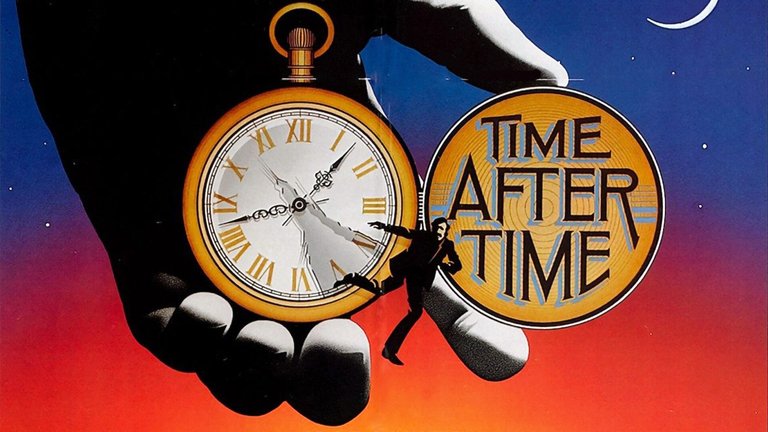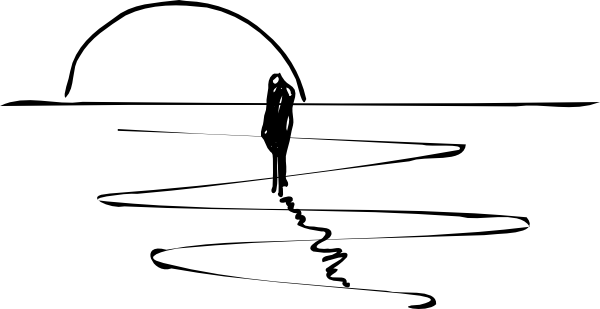„If you write something and put something very real in it, the listener will feel something very real.“

„Wenn du etwas schreibst und etwas sehr Reales hineinlegst, dann wird der Zuhörer etwas sehr Reales fühlen.”
This statement comes from the woman who is largely responsible for a song from 1983. A song that has lost none of its fascination to this day. This phenomenon seems to me reason enough to have a closer look at Cyndi Lauper and 'Time After Time' (in whose creation Rob Hyman played a not insignificant role). The song has also been reinterpreted by several artists from a wide range of different musical genres. The following examples are intended to illustrate this.
Diese Aussage stammt von der Frau, die zu einem großen Teil für ein Lied aus dem Jahr 1983 verantwortlich ist, welches bis heute nichts von seiner Faszination eingebüßt hat. Dieses Phänomen erscheint mir Anlass genug, um auf Cyndi Lauper und den Song »Time After Time« (bei dessen Entstehung Rob Hyman eine nicht unwesentliche Rolle spielte) näher einzugehen. Zudem wurde das Lied von Künstlern der unterschiedlichsten musikalischen Strömungen neu interpretiert. Die aufgeführten Beispiele werden dies verdeutlichen.
In 1983, Cyndi Lauper was in the studio working on her debut album, 'She's So Unusual', which had been largely completed but still had room for one more song. Unable to muster much enthusiasm for the interpretation of tracks she had not written, the young artist insisted that the final song should be written by herself. The fact that in the end, with a few exceptions, this proved to be successful also had something to do with a coincidence.
1983 bastelte Cyndi Lauper im Studio an ihrem Debütalbum »She‘s So Unusual«, das zwar im Großen und Ganzen bereits fertig, aber noch Platz für ein weiteres Lied bot. Da die junge Künstlerin von Anfang an keine große Begeisterung für die Interpretation von Titeln aufbringen konnte, die sie nicht selbst mitgestaltete, bestand sie darauf, dass der letzte Song aus ihrer Feder stammen sollte. Das dies letztlich mit ein paar wenigen Abstrichen gelang, hatte auch etwas mit einem Zufall zu tun.

The members of The Hooters were in the recording studio at the same time as the New York singer-songwriter was working on the song. Rob Hyman (producer, arranger, multi-instrumentalist and a founding member of the band) was listening to what Cyndi Lauper was strumming away on the piano. He introduced himself, sat down next to her and asked her what the theme of the song should be. Cyndi replied, "It's about breaking up with my partner and manager, David Wolf."
Zur gleichen Zeit, als die New Yorker Singer-Songwriterin an jenem Song tüftelte, hielten sich auch die Mitglieder der Band »The Hooters« im Tonstudio auf. Dabei lauschte Rob Hyman (Produzent, Arrangeur, Multiinstrumentalist und Gründungsmitglied der Band), was Cyndi Lauper am Klavier so vor sich hin klimperte. Er stellte sich vor, setzte sich neben sie und erkundigte sich, welches Thema den Song prägen sollte. „Die Trennung von meinem Lebensgefährten und Manager David Wolf.“

The beginning had been made. A short time later there was the recording of their first demo. The instruments were in the hands of Eric Bazilian (guitar) and Rob Hyman (piano), while the vocals were taken over by Cyndi Lauper. The song was originally intended to have an up-tempo-SKA-beat, but it quickly became clear that this was unnecessary as more and more lines were found in the lyrics. It became clear that the song was going to be emotionally driven.
Der Anfang war gemacht. Kurze Zeit später nahm man ein erstes Demo auf. Die Instrumente in den Händen von Eric Bazilian (Gitarre) und Rob Hyman (Piano), während Cyndi Lauper den Gesang übernahm. Ursprünglich sollte der Song einen Uptempo-Ska-Beat erhalten, was sich allerdings rasch erübrigte, je mehr Zeilen im Text gefunden wurden. Es war klar, dass hier die Gefühle im Vordergrund stehen müssen.
The first stanza is characterised by the suitcase of memories, which contains that which serves as the lyrical framework of the poem
Die erste Strophe ist geprägt von dem Koffer der Erinnerung (suitcase of memories), der das beinhaltet, was als lyrisches Gerüst dient.
Caught up in circles
Confusion is nothing new
Flashback, warm nights
Almost left behind
Suitcase of memories
Time after
The title of the song that closes the album was originally intended as a contingency, should be later adapted and was borrowed from the title of a 1979 sci-fi film.
Der Titel des Songs, der dann den Abschluss bildet, war ursprünglich nur als Notlösung gedacht, sollte später noch angepasst werden und war dem Titel eines Science-Fiction-Films aus dem Jahr 1979 entliehen.

What follows in the next verse is precisely the kind of thing that was so important to Cyndi Lauper. The filling of the song with content based on real encounters and experiences. The alarm clock, which ticks far too loudly, was a 'gift' from her ex-boyfriend. He had previously destroyed her beloved old Betty Boop alarm clock. But the replacement was so loud that she had to hide it behind the shower curtain in the bathroom in the dead of night.
Was in der nächsten Strophe folgt, spiegelt exakt das wider, was Cyndi Lauper so wichtig war. Den Song mit einem Inhalt zu bestücken, der auf wahre Begegnungen und Erlebnissen beruht. Der viel zu laut tickende Wecker war das „Geschenk“ ihres Ex-Freundes, der zuvor ihren geliebten, alten Betty Boop-Wecker zerstört hatte. Nur war der Ersatz so laut, dass sie ihn mitten in der Nacht im Bad hinter dem Duschvorhang zwischenlagern musste.
Caught up in circles
Confusion is nothing new
Flashback, warm nights
Almost left behind
Suitcase of memories
Time after
Producer Rick Chertoff, in the recording studio complaining that the second hand of his wristwatch had apparently changed its mind and was now running backwards, seems to be responsible for the following.
Für das danach Folgende scheint der Produzent Rick Chertoff die Verantwortung zu tragen, der sich im Tonstudio sich ausgehend darüber ausließ, dass der Sekundenzeiger seiner Armbanduhr es sich offensichtlich anders überlegt hat und nur noch rückwärts läuft.
I’m walking too far ahead
You’re calling to me, I can’t hear
What you’ve said
Then you say, “go slow”
And I fall behind
The second hand unwinds
Cyndi Lauper explains how the final chorus was written, saying that she felt a protective hand on her shoulder all the time in the studio, making the ups and downs and falling and picking herself up a positive experience. She says: "I don't know whose hand was on my shoulder because I was alone, but whoever it was, I think they were helping me with the writing of the chorus."
Wie es dann zu dem endgültigen Refrain kam, erklärt Cyndi Lauper damit, dass sie im Studio ständig das Gefühl hatte, eine beschützende Hand auf ihrer Schulter zu spüren, die das Auf und Ab, sowie das Fallen und Auffangen als positives Erlebnis spürbar machte. Sie sagt dazu: „Ich weiß nicht, wessen Hand auf meiner Schulter lag, weil ich allein war, aber wer auch immer das war, ich denke, er hat mir geholfen, den Refrain zu schreiben.“
Time after time
If you fall, I will catch you, I’ll be waiting
Time after time
If you’re lost, you can look and you will find me
Time after time
If you fall, I will catch you, I will be waiting
Hyman said of the meaning of Time After Time: "There's something mysterious about this song. He added: "It's a bittersweet song… and there's a dark side and then there's a happy side, but it's not a happy song. It's a hopeful song, but I think that's life. It's difficult to write love songs without being too much ‘Oh I love you forever’ or it's a breakup song ‘I never want to see you again’ and it's an angry, bitter song. I think that's the kind of thing that touches people, and that's the kind of thing that will touch people in the future. To me, the best songs are the ones that have something mysterious about it. The ones where you don't really have a clue as to what's going on.”
"Dieser Song hat etwas Geheimnisvolles", sagte Hyman über die Bedeutung von "Time After Time". Er fügte hinzu: "Es ist ein bittersüßer Song... und es gibt eine dunklere Seite und dann gibt es eine aufmunternde Seite, aber es ist kein glücklicher Song. Es ist ein hoffnungsvoller Song, aber ich denke, so ist das Leben. Es ist schwer, Liebeslieder zu schreiben, ohne zu sehr 'oh ich liebe dich für immer' zu sein, oder es ist ein Trennungslied 'ich möchte dich nie wieder sehen' und es ist ein wütender, bitterer Song." Er fügt hinzu: "Ich denke, das ist es, was die Leute berührt und weiterhin berühren wird. Für mich sind die besten Songs die, die ein bisschen Geheimnis in sich tragen. Man weiß nicht so recht, was da vor sich geht."
You may add this post to the well-stocked catalogue of #ThreeTuneTuesday (#ttt) by the idea generator @ablaze.
Dieser Beitrag kann in den reichhaltig bestückten Katalog von #ThreeTuneTuesday (#ttt) des Ideenlieferanten @ablaze einsortiert werden.



#hive #posh
Love this song... It is my favorite Cyndi Lauper song, if not one of my favorite songs from the 80s. It was fascinating to read about how this song was conceived. The chorus is obviously the best part, so it's interesting that Lauper noted she felt as though an invisible person was guiding her through that part. Amazing...
Thank you for sharing! 🙏 Enjoy your week